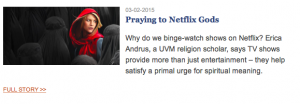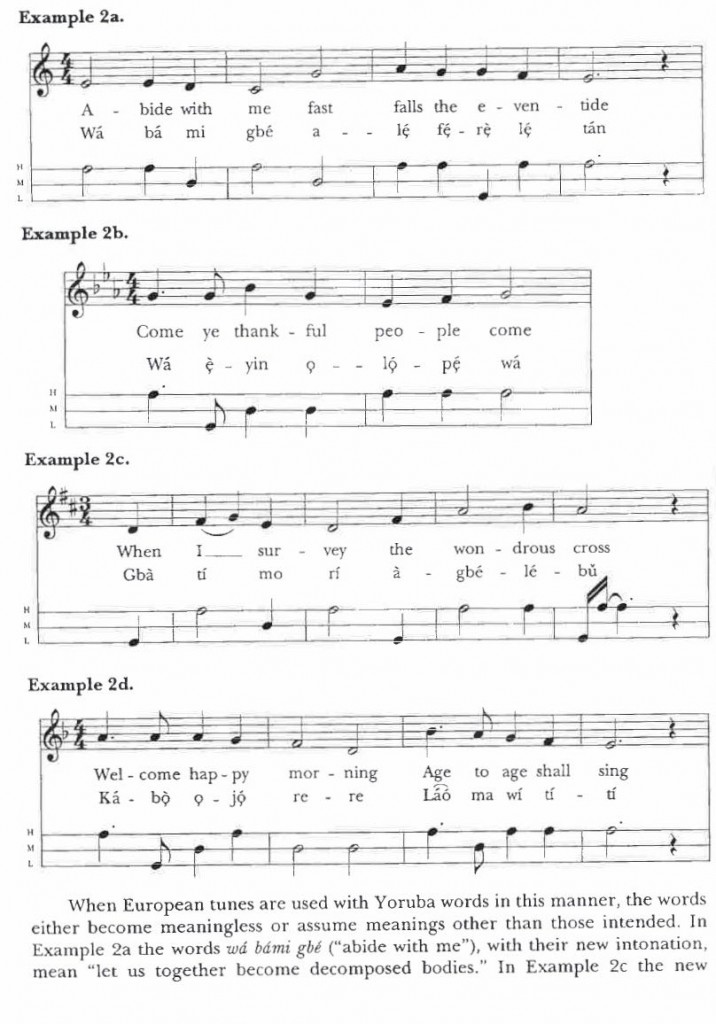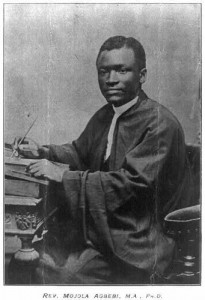By Professor Vicki L. Brennan
In the days following the election I felt as though I were in a fog, upset about what seemed to be a validation of the role that misogyny and racism had played in the election, anxious about what a Trump presidency would mean for the United States and the world more generally, and unsure about what I could or even should do to respond to and act on any of this. I joined the ranks of many who made donations to nonprofit organizations. I vowed to make my own political commitments more clear and also to avoid the insularity and negativity found on social media sites. But still, I wondered (and still do): What now? What role do we as scholars have to play in Trump’s America? These questions seem especially vital given both the nature of our expertise (see my colleagues comments above for evidence of that) but also due to the fact that our expertise seems less valued and respected than ever before in a supposedly “post-fact” world.
Scholars of religion are responding in a number of ways. What follows are links to statements, op-eds, and analyses that have appeared in the weeks since the election that provide some answers to the question: “What now?”
Disciplinary Resolutions and Statements: The annual meetings of scholarly organizations most relevant to my own research and teaching interests took place soon after the election; the American Anthropological Association meeting from November 16-20; the American Academy of Religion from November 19-22; and the African Studies Association from December 1-3. I decided to stay home this year, so I viewed the meetings from a distance, via text messages from friends, live-tweeting feeds, and blog posts made by those in attendance. Based on these observations, it seems that for many these meetings were sites for the building of solidarity and plans for action.
A number of the scholarly associations with which members of our department are associated issued resolutions or statements in response to the election:
- American Anthropological Association Resolution in the Wake of the 2016 Elections
- Statement from African Studies Association Leadership
- Statement from the board of the Middle East Studies Association
- American Studies Organization’s Statement
Op-Eds, Blog posts, and other Analyses: Scholars of religion have also been publishing their takes on the election in a variety of venues. These are just a few of the things I have found useful for understanding the role that religion played in the election, the impact that a Trump presidency might have on religious communities in the United States, as well as possible answers to the question: What do we do now?
Omid Safi writes about how to respond to hatred with love at On Being, and uses the iconic film Star Wars as a potential guide to our action:
Somehow our means and our ends have to be consistent. We can’t hate our way out of Trump. There is still the need for love, for love to move into the public spaces. There is still the need for that love to be called justice when it is public, and for that same love to be tenderness when it moves inward. In confronting the Dark Side, let us never turn to the Dark Side. Let us not become the very quality we so despise.
In the days since the election, various lines from Marx’s The Eighteenth Brumaire of Louis Napoleon have been echoing in my mind–certainly his observation that history repeats itself “first as tragedy, the second time as farce”–but more crucially his reminder that we live in a world that has already been shaped by historical forces:
Men make their own history, but they do not make it as they please; they do not make it under self-selected circumstances, but under circumstances existing already, given and transmitted from the past. The tradition of all dead generations weighs like a nightmare on the brains of the living.
Historians have much to offer to our understanding of our own time, how we got here, and how we might move forward. For an example of how historians of religion are responding to Trump’s election see: Kelly J. Baker in the NY Times on the alt-right, the KKK, and white-collar Supremacy. The bloggers at Religion in American History have also made a number of posts on the election, including one by Elesha Coffman on conservatism in the 1980s and how it relates (or doesn’t) to the current moment and another by Janine Giordano Drake on the Federalist papers and the electoral college.
With the nod to Marx we might also note the need to fully comprehend the role that economics–and particularly the rise of inequality globally–played in the US election. Cornel West writes on the end of American neoliberalism:
What is to be done? First we must try to tell the truth and a condition of truth is to allow suffering to speak. For 40 years, neoliberals lived in a world of denial and indifference to the suffering of poor and working people and obsessed with the spectacle of success. Second we must bear witness to justice. We must ground our truth-telling in a willingness to suffer and sacrifice as we resist domination. Third we must remember courageous exemplars like Martin Luther King Jr, who provide moral and spiritual inspiration as we build multiracial alliances to combat poverty and xenophobia, Wall Street crimes and war crimes, global warming and police abuse – and to protect precious rights and liberties.
For those of us who want to integrate these historical lessons into our classes, Savage Minds includes a link to the Trump 2.0 syllabus in their round-up of materials on how to teach the current moment.
As scholars we need to be able to speak to the questions of truth, facts, and reason that have emerged in the wake of Trump’s rise. I hope to write about this issue in more depth in the future, since questions of religious “truth” and cultural forms of knowledge lie at the center of my research and teaching. For now, here are links to two articles that I find thought-provoking at this time: First, Biella Coleman discusses politics, performativity, truth, and lies in a post that offers a possible role that scholars who analyze religion might play in addressing our current crisis
Fake is only fake if you’ve bought into a notion of the real. And the question of what is real is even more urgent and vexed today. But theory and scholarship won’t get us out of this predicament. What we need is a pragmatic practice that recognizes the centrality of fantasy, emotions, fiction, performance, and myth for politics and political messaging.
And finally, Chimamanda Adichie reminds us that “Now is the time to talk about what we are actually talking about” on the website for the New Yorker:
Now is the time to counter lies with facts, repeatedly and unflaggingly, while also proclaiming the greater truths: of our equal humanity, of decency, of compassion. Every precious ideal must be reiterated, every obvious argument made, because an ugly idea left unchallenged begins to turn the color of normal. It does not have to be like this.

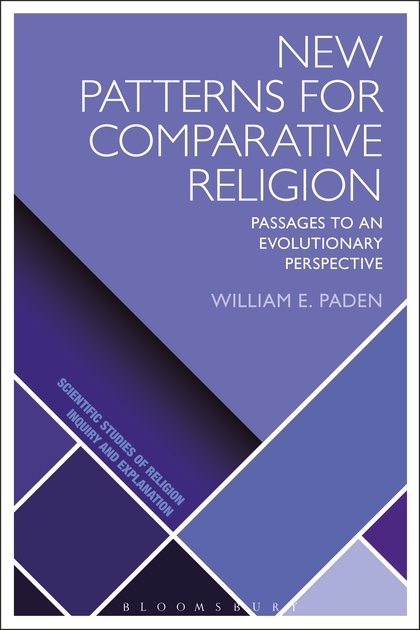



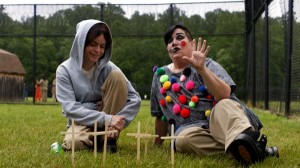

 Evan Thompson’s
Evan Thompson’s
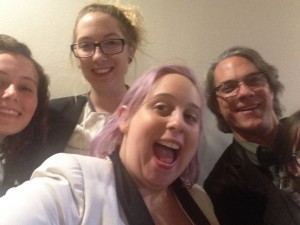
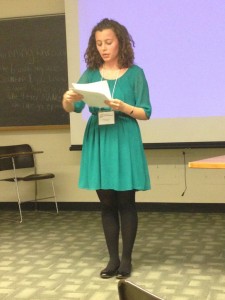


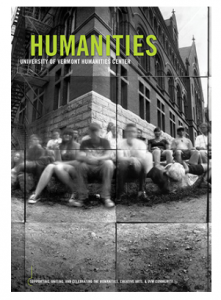 evance of work by UVM faculty, students, and alumni. It featured a number of Religion Department faculty!
evance of work by UVM faculty, students, and alumni. It featured a number of Religion Department faculty!